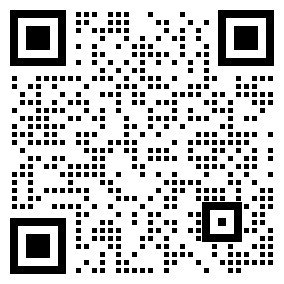Types of commonly used high-precision displacement sensors
Date:March 20, 2025 Views:350
High precision displacement sensor is a key instrument used to measure the position change of objects, which is widely used in precision measurement, automatic control, engineering testing and other fields. These sensors typically have high accuracy and resolution and are capable of detecting small shifts in displacement. According to the working principle, structure and application scenarios, there are many types of high-precision displacement sensors.
Inductive Displacement Sensor (LVDT)
Principle: LVDT (Linear Variable Differential Transformer) inductive displacement sensor detects linear displacement by measuring changes in inductance. Its structure is mainly composed of a primary coil, two secondary coils and a movable iron core. A change in displacement causes a change in the position of the core in the secondary coil, which changes the size of the inductance.
Advantages: High precision, high resolution, no contact, durable, long-term stability.
Application:
Precision measuring equipment
Automatic control system
Engineering test equipment
Displacement measurement in the aerospace field
Laser displacement sensor
Principle: A laser displacement sensor measures the displacement of an object by firing a laser beam and measuring the reflection time or Angle change of the laser spot to the target surface. Common laser sensors are time-of-flight (TOF) and triangulation.
Advantages: Non-contact, high precision, high speed response, suitable for small displacement measurement.
Application:
Industrial automation production line
High precision surface profile measurement
Quality control and inspection
Nanotechnology research field
Grating displacement sensor
Principle: The grating displacement sensor uses the change of the grating fringe to detect the displacement of the object. It usually consists of a light source, a grating, and a photodetector. The displacement causes the grating fringe to shift, which is converted into an electrical signal by the photodetector.
Advantages: High precision, fast response, suitable for small displacement measurement.
Application:
High precision displacement measurement
Nanoscale localization
Displacement monitoring in micromachining
Positioning control in semiconductor industrial equipment
Capacitive displacement sensor
Principle: Capacitive displacement sensors sense the displacement of objects by measuring changes in capacitance. Changes in capacitance are usually inversely proportional to the distance between the electrode of the sensor and the target object.
Advantages: High sensitivity, non-contact, suitable for small displacement measurement.
Application:
Precision process measurement
High precision displacement monitoring in machine automation
Measure small displacement, thickness, deformation, etc
Photoelectric displacement sensor
Principle: The photoelectric displacement sensor detects the position change of the target object through the light source and the photodetector. There are usually two types of reflected and transmitted structures, which obtain displacement information by measuring the intensity change of reflected light.
Advantages: Simple structure, fast response, non-contact.
Application:
Position detection on high-speed automated production lines
Robot displacement measurement
Measure the surface shape, size, etc
Hall effect displacement sensor
Principle: The Hall effect displacement sensor uses the Hall effect principle, when the current passes through the conductor and is affected by the magnetic field, it generates a voltage signal perpendicular to the direction of the current and the direction of the magnetic field. The displacement of an object is measured by sensing changes in the magnetic field.
Advantages: No contact, high durability, suitable for harsh environments.
Application:
Position encoder
Motor shaft position detection
Displacement detection in the automotive industry
Industrial automation control
Displacement Sensor (LVDT+)
Principle: It is a new type of LVDT displacement sensor, through improving the inductance principle, combined with higher precision signal processing circuit, so that it is suitable for extremely high precision displacement measurement.
Advantages: Extremely high accuracy, suitable for measurements requiring extremely high displacement resolution.
Application:
Nanotechnology field
High precision engineering experiment
Aerospace and micro and nano processing fields
Common application areas
Precision machining and manufacturing
High precision displacement sensor is very important in precision machining and high precision manufacturing. For example, in CNC machine tools, real-time positioning and correction through displacement sensors ensure machining accuracy at the nanometer level.
Automobile industry
In automobile electronic control, the displacement sensor is used to detect the position change of the engine position, wheel Angle, suspension system and other components to ensure the dynamic stability and driving safety of the vehicle.
Semiconductor industry
In semiconductor devices, displacement sensors are used to control tiny displacements in lithography, coating, film deposition, and other processes.
aerospace
In the control system of spacecraft and aircraft, the displacement sensor is used to monitor the position of the aircraft's wing surface, engine thrust, steering gear control and other components.
Robot technology
High-precision displacement sensors are widely used in robot positioning, control and path planning, especially in fields requiring operation, such as medical robots and industrial robots.
Optical and surface measurements
In optical surface detection and measurement, laser displacement sensor and grating displacement sensor are widely used in surface profile, roughness measurement and shape analysis.
Scientific research and laboratory testing
In laboratories in physics, materials science and other fields, displacement sensors are used to measure the tiny movement of objects, such as detecting the displacement of objects under the action of tiny forces in mechanical experiments.
Automation and control systems
In automated production lines, displacement sensors can be used to monitor the position of the workpiece, automatically adjust the position of the robot arm and other operations to improve production efficiency and accuracy
免责声明: 本文章转自其它平台,并不代表本站观点及立场。若有侵权或异议,请联系我们删除。谢谢! Disclaimer: This article is reproduced from other platforms and does not represent the views or positions of this website. If there is any infringement or objection, please contact us to delete it. thank you! |


